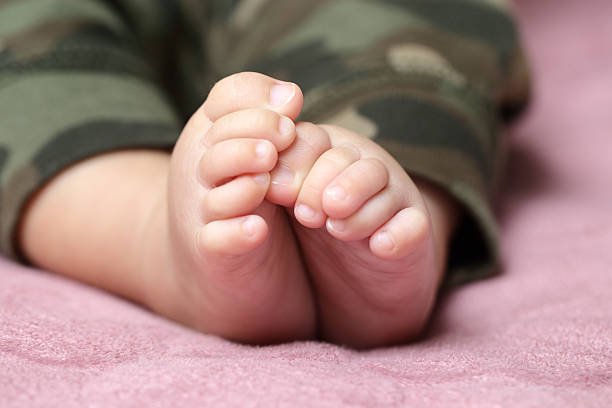Clubfoot, also known as talipes equinovarus (TEV), is a congenital orthopaedic condition that affects the foot’s alignment. It is one of the most common musculoskeletal birth defects, with an estimated incidence of 1 in 1,000 live births. Clubfoot can significantly impact a child’s ability to walk and function normally if left untreated.
What Causes Clubfoot?
- Genetic Factors: Evidence suggests that clubfoot may have a genetic component, as it tends to run in families. However, the exact genetic mechanisms are still under investigation.
- Environmental Factors: While genetics plays a role, environmental factors during pregnancy can also contribute to clubfoot. Maternal smoking, alcohol consumption, and certain medications may increase the risk.
- Abnormal Foetal Development: Clubfoot is primarily a result of abnormal development in the womb. It can occur due to improper positioning of the foetus or the abnormal formation of muscles, tendons, and ligaments in the foot.
- Other Associated Conditions: Clubfoot can be associated with other congenital conditions, such as spina bifida, arthrogryposis, or amniotic band syndrome.
How is Clubfoot Diagnosed?
Clubfoot is typically diagnosed shortly after birth, often during a routine physical examination. Key diagnostic features include:
- Appearance: A clubfoot presents with a distinct appearance, where the foot is turned inward and downward, resembling the shape of a golf club.
- Range of Motion: Limited dorsiflexion (ability to point the toes upward) and eversion (turning the sole of the foot outward) are characteristic of clubfoot.
- X-rays and Imaging: In some cases, X-rays and other imaging studies may be used to assess the severity of the condition and guide treatment planning.
What is the treatment for Clubfoot?
Early intervention is crucial for successful clubfoot treatment. Several treatment options are available:
Ponseti Method
The Ponseti method is the most widely used and effective non-surgical approach. It involves a series of gentle manipulations and casting to correct the foot’s position gradually. The process usually takes several weeks and may require a minor procedure to release the Achilles tendon (heel cord) if necessary.
French Physiotherapy Method
This method involves daily stretching exercises and manipulation of the foot to correct its position. It is often used in conjunction with the Ponseti method or as an alternative in cases where casting is not possible.
Surgical Correction
Surgical intervention is considered when conservative methods fail to achieve the desired correction. Surgical techniques vary but often involve releasing and lengthening tight tendons and ligaments, followed by casts or braces to maintain the corrected position.
Management of Clubfoot
- Bracing: Regardless of the treatment method used, most children with clubfoot require bracing to maintain the corrected foot position. The most commonly used brace is the Denis-Browne splint or the Mitchell-Ponseti brace. These braces are initially worn full-time and gradually transitioned to nighttime use as the child ages.
- Monitoring: Long-term follow-up and monitoring are essential to ensure the clubfoot does not relapse. Frequent orthopaedic specialist check-ups are recommended until the child reaches skeletal maturity.
- Physical Therapy: Physical therapy may be necessary to improve the child’s strength, flexibility, and mobility as they grow.
- Supportive Care: Providing emotional support and education to parents and caregivers is crucial. Managing a child with clubfoot can be challenging, and a supportive network can help alleviate stress and anxiety.
- Surgical Interventions: In cases where surgical correction is necessary, careful postoperative care and rehabilitation are essential to optimise outcomes.
Prognosis
The prognosis for children with clubfoot has improved significantly, thanks to early intervention and advancements in treatment methods. With proper treatment and management, most children with clubfoot can expect to lead active, everyday lives. However, the long-term outlook depends on several factors, including the severity of the condition, the age at which treatment begins, and adherence to follow-up care.
Clubfoot and talipes equinovarus are congenital orthopaedic conditions that, if left untreated, can lead to significant disability and functional impairment. Early diagnosis and appropriate treatment are key to achieving the best possible outcome. The combination of non-surgical techniques like the Ponseti method and surgical interventions, when necessary, has revolutionised clubfoot management, offering children the chance to live healthy, active lives. Effective management includes bracing, physical therapy, and long-term monitoring to maintain the corrected foot position. With a comprehensive approach to care, children born with clubfoot can overcome the challenges posed by this condition and enjoy a fulfilling life.
Podiatrists are an integral part of Clubfoot’s diagnosis, treatment and management. Podiatrists may be a part of a paediatric orthopaedic team in public hospitals, with many trained in the Ponseti casting method.
Patients with a history of clubfoot often consult podiatrists in the private setting for custom foot orthotic prescription and footwear advice.
Is treatment painful for the baby?
The treatment process may cause some discomfort for the baby during casting and manipulation sessions, but it is usually well tolerated. Pain medication can be given if needed.
How long does treatment for clubfoot take?
The duration of treatment varies depending on the severity of the clubfoot and how well the child responds to treatment. In general, treatment can last several months to a few years.
Will my child be able to walk normally after treatment?
With proper treatment, the majority of children with clubfoot are able to walk normally and participate in activities without pain or difficulty.

